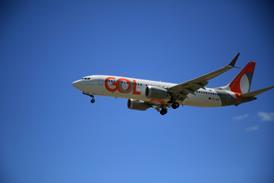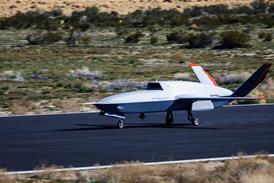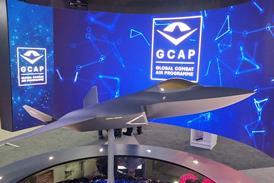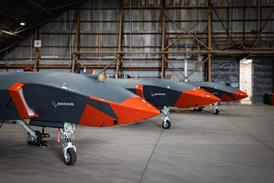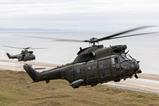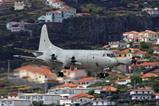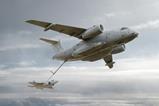Ten years ahead of the planned entry into service of the UK’s Tempest fighter, a cross-party parliamentary committee has raised questions over the nation’s ability to train new pilots to operate the stealthy type.
Published on 14 January, a report by the House of Commons Defence Committee, titled The Global Combat Air Programme, also decries BAE Systems’ decision to end production of its Hawk advanced jet trainer without developing a successor platform.
“Training requirements [for the future fighter] will not be met by the existing Hawk T2, and with Hawk production lines now closed the chance to capitalise on its success looks to have been lost,” the committee says.

The Royal Air Force (RAF) uses a 28-strong fleet of Hawk T2s made available via the UK Military Flying Training System, but the model has been beset by availability problems related to its Rolls-Royce/Safran Adour engine. This has forced the service to send some student pilots to receive training overseas, including at locations in Sardinia and the USA.
As another result of the reliability issue, RAF chief of the air staff Air Chief Marshal Sir Richard Knighton last year indicated that the service will look to remove the Hawk T2 from use ahead of its currently planned 2040 target.
The committee’s report describes the Hawk programme – which delivered more than 1,000 of the aircraft to customers in 18 countries (including the Boeing T-45 Goshawk derivative developed for the US Navy), as “an undeniable success story for the British defence industry over the 50 years since it was first flown”. Production of the type ended in 2020.
Cirium fleets data used in FlightGlobal’s 2025 World Air Forces directory indicates that 606 Hawks remained in military use as of late last year, including 189 T-45Cs. Among other leading users of the single-engined type are India (119), Saudi Arabia (81), Finland (35) and Australia (33).
“The skills and manufacturing capacity which had built up over decades will prove challenging and costly to regenerate,” the report states. “We recognise that innovative training solutions, including modular aircraft and synthetics, may offer new opportunities for industry; but we find the failure to capitalise on the success of Hawk remarkably short-sighted and deeply regrettable.”
The UK government’s Strategic Defence Review – which is due to report its recommendations around mid-year – could potentially consider the future of the Hawk T2, along with a separate need to re-equip the RAF’s Red Arrows aerobatic display team, which continues to employ older Hawk T1s.
In response, BAE tells FlightGlobal: “Hawk continues to deliver frontline training around the world and our priority is to deliver on our commitments, in particular to the RAF as part of the 11-year Hawk support contract signed in 2022.” Valued at £590 million ($719 million), that deal spans support services for the T2 fleet and the provision of depth maintenance for Red Arrows jets at RAF Valley on Anglesey, north Wales.
“As we look beyond the next decade, we are supporting analysis with customers around the world, including the RAF, on their future training requirements which naturally looks at the combination of aircraft, live flying and virtual training,” BAE says. “The outcome of this analysis will ensure any decisions made about a future training platform and the subsequent investment is put into the right areas at the right time – both for ourselves and our customers.”
The company also notes that it is “investing in a broad range of training systems, partnerships and future technologies, as well as trials of technologies using Hawk; such as the [UK] Ministry of Defence/Red 6 partnership looking at the role of augmented reality, which could offer real advantages and future decisions around fighter pilot training”.
Conducted late last year, the activity with Red 6 saw a Hawk T2 undergo flight trials using the company’s Advanced Tactical Augmented Reality Systems technology.
Should the UK identify a future requirement to support the instruction of pilots for the Tempest – a type it expects to introduce from 2035, potential options could include the Boeing T-7A, Leonardo M-346 and Lockheed Martin/Korea Aerospace Industries T-50. In addition, UK company Aeralis also is advancing its development of a modular family of aircraft, including variants capable of delivering basic and advanced jet training services.
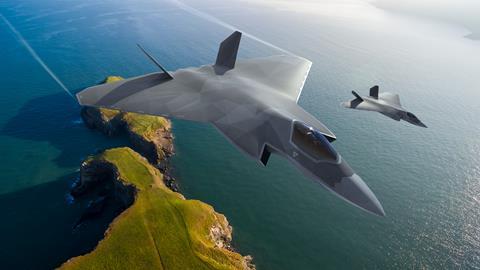
Training for operations with the Tempest platform would make extensive use of simulators – as is the case currently with the UK’s Lockheed F-35B Lightning force. Assets to be employed during live flying training would in all likelihood also be required to perform secondary duties, such as delivering adversary training, and serving as surrogate platforms for frontline combat aircraft.



